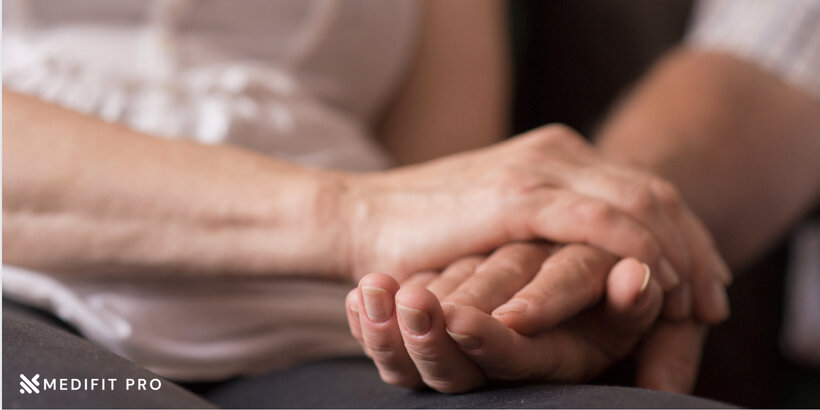Urinary incontinence is a condition that affects millions of people worldwide, yet despite its widespread prevalence, it is often shrouded in stigma and shame. This medical condition, in which an individual experiences involuntary loss of bladder control, can be a source of immense embarrassment and impact one’s quality of life. But despite its prevalence, many people suffering from incontinence choose to suffer in silence, afraid to seek help or talk about their condition. This article aims to shed light on the stigma associated with urinary incontinence, its definition and prevalence, and to encourage people to seek help and support. So, let’s start by defining what urinary incontinence is and how common it is.
What is Urinary Incontinence?
Urinary incontinence is defined as the involuntary loss of bladder control, resulting in leakage of urine. It can be caused by a variety of factors, including weakness of the pelvic floor muscles, nerve damage, certain medical conditions, and age-related changes. There are several different types of incontinence, including stress incontinence, urge incontinence, mixed incontinence, and overflow incontinence, each with its own set of symptoms and causes. The causes,symptoms and types will be discussed later in detail in the article.
Prevalence
Prevalence of urinary incontinence is widespread, affecting people of all ages and both sexes. It is estimated that approximately 25 million Americans experience incontinence, with the highest rates occurring among older adults and women. Despite its high prevalence, many people still choose to suffer in silence, embarrassed to seek help or talk about their condition. This stigma associated with incontinence needs to be addressed, so that people can receive the care and support they need to manage their condition and live full, healthy lives.
Overview of The Stigma Surrounding Urinary Incontinence
Despite affecting millions of people worldwide, incontinence is still a taboo topic, with many sufferers choosing to suffer in silence rather than seeking help or speaking openly about their condition. This stigma associated with incontinence can have a profound impact on an individual’s quality of life, causing feelings of embarrassment, low self-esteem, and even depression.
However, the shame surrounding incontinence is unwarranted, and it is time for society to start talking about this condition in an open and honest manner. The stigma associated with incontinence is rooted in societal misconceptions about aging, weakness, and a lack of control. But the reality is that incontinence can affect people of all ages, regardless of their physical abilities, and it is not a reflection of a person’s character or self-worth.
The stigma associated with urinary incontinence also extends to healthcare professionals, with many sufferers being too embarrassed to discuss their condition with their doctor. This reluctance to seek medical advice can lead to a delay in diagnosis and treatment, resulting in the condition becoming more severe and harder to manage. This only perpetuates the cycle of shame and stigma, making it even more difficult for sufferers to seek help.
It is essential to raise awareness about the stigma associated with incontinence and to educate the public about this condition. By breaking the taboo and destigmatizing incontinence, we can encourage those who are suffering to seek help and support, improve their quality of life, and live with confidence and dignity. So, let’s start the conversation, and let’s break down the barriers to seeking help and living with incontinence.
The Impact of The Stigma
The Psychological Effect on Day to Day Life
Living with urinary incontinence can have a profound impact on an individual’s psychological well-being. The stigma and shame associated with the condition can lead to feelings of embarrassment, low self-esteem, and depression. It can also cause sufferers to withdraw from social situations and limit their activities, leading to feelings of isolation and loneliness.
For many people, incontinence can be a source of constant anxiety, causing them to worry about accidents and the shame that may result. This can lead to feelings of stress and tension, and for some, can even trigger panic attacks. The constant worry and shame can take a toll on an individual’s mental health, making it even more difficult to manage their condition.
Moreover, the physical symptoms of incontinence, such as frequent trips to the bathroom, can cause fatigue and exhaustion, further impacting an individual’s psychological well-being. The constant need to plan their daily activities around their condition can be stressful and draining, leading to feelings of frustration and hopelessness.
The Psychological Effect on Seeking Treatment
Seeking treatment and management for urinary incontinence can have a significant impact on an individual’s quality of life. With the right support and resources, individuals can gain control over their condition and reduce the frequency and severity of accidents. This can lead to improved self-esteem, increased confidence, and a better overall quality of life.
However, many individuals are reluctant to seek help and treatment due to the stigma and shame associated with incontinence. This reluctance can lead to a delay in diagnosis and treatment, resulting in the condition becoming more severe and harder to manage. By breaking down the stigma and seeking treatment and support, individuals can improve their quality of life and live with confidence and dignity.
Causes of Urinary Incontinence
Physical causes of urinary incontinence can include:
• Weak or damaged pelvic floor muscles: One of the most common causes of incontinence is weak or damaged pelvic floor muscles. These muscles play a crucial role in controlling bladder function, and when they are weakened, they can cause accidents. This can be due to pregnancy and childbirth, menopause, or other medical conditions.
• Overactive bladder muscles: Another common cause of incontinence is an overactive bladder. This is a condition in which the muscles in the bladder contract involuntarily, causing accidents. This can be due to nerve damage, bladder problems, or other medical conditions.
• Prostate problems: Incontinence can also be caused by conditions by prostate problems. One of the most common causes of prostate problems leading to incontinence is benign prostatic hyperplasia (BPH). This is a noncancerous growth of the prostate that can cause urinary symptoms such as frequency, urgency, and accidents.Another prostate-related condition that can cause incontinence is prostate cancer.
• Urinary tract infections: When a UTI affects the bladder, it can cause the muscles in the bladder to contract involuntarily, leading to accidents. This is known as an overactive bladder, and it is a common cause of incontinence. In addition to overactive bladder, UTIs can also cause damage to the nerves and muscles that control bladder function, leading to incontinence. This damage can occur as a result of the infection or as a side effect of treatment for the infection.
• Nerve damage: Treatment for prostate cancer, such as surgery or radiation, can result in damage to the muscles or nerves that control bladder function, leading to incontinence.
Psychological Causes of Urinary Incontinence
• Stress: This type of incontinence occurs when physical or emotional stress triggers the bladder muscles to contract. This can result in accidents, especially during physical activity or in stressful situations.
• Urge: This type of incontinence occurs when the bladder muscles contract suddenly and unexpectedly, resulting in accidents before reaching the bathroom. This can be triggered by emotions such as anxiety or fear.
• Mixed: This type of incontinence is a combination of stress and urge incontinence and can result from a combination of physical and psychological factors.
In some cases, incontinence can be a symptom of a larger psychological issue such as depression or anxiety. In these cases, addressing the underlying mental health condition can help improve incontinence symptoms.
Age Related Causes of Urinary Incontinence
Age-related causes of urinary incontinence can include:
• Weak pelvic floor muscles: As we age, the muscles that support the bladder and control bladder function can become weaker, leading to incontinence.
• Menopause: Changes in hormone levels during menopause can weaken the muscles in the bladder and urethra, leading to incontinence.
• Prostate problems: As men age, the prostate can become enlarged, which can put pressure on the urethra and lead to incontinence.
• Neurological conditions: Age-related neurological conditions, such as stroke or Parkinson’s disease, can damage the nerves that control bladder function, leading to incontinence.
Debunking The myths and Breaking The Stigma
Myth #1: Incontinence is just a normal part of aging.
Fact: While incontinence is more common as we age, it is not a normal part of aging and can often be treated or managed effectively. There are many different causes of incontinence, and seeking help from a healthcare professional can help identify the root cause and develop a treatment plan.
Myth #2: Incontinence is a minor issue and not worth seeking treatment for.
Fact: Incontinence can have a significant impact on quality of life, affecting physical, emotional, and social well-being. Seeking treatment can improve the chances of successful management and reduce the impact of the condition on daily life.
Myth #3: Incontinence is a female-only issue.
Fact: Both men and women can experience incontinence, and the causes and treatments for the condition can vary between the sexes. It is important to seek medical attention regardless of gender, to receive an accurate diagnosis and effective treatment plan.
Myth #4: Incontinence is a sign of a lack of personal hygiene or discipline.
Fact: Incontinence is a medical condition, not a personal choice or failure. Blaming or shaming those with incontinence only adds to the stigma and shame they may already be feeling.
It is time to break the stigma and misinformation surrounding urinary incontinence. By debunking these myths and educating ourselves, we can support those affected by the condition and improve quality of life for all. Urinary incontinence is not a sign of weakness or lack of hygiene. Blaming or shaming those with incontinence only adds to the stigma and shame they may already be feeling. It is important to understand that incontinence is not a personal failure or choice, and seeking medical attention is the first step towards managing the condition and improving quality of life. With the right treatment and support, individuals living with incontinence can live fulfilling and active lives.
Treatment Options for Urinary Incontinence
1. Lifestyle Changes: Simple lifestyle changes, such as reducing fluid intake before bedtime, avoiding bladder irritants like caffeine and alcohol, and maintaining a healthy weight, can help reduce the symptoms of incontinence.
2. Pelvic Floor Muscle Exercises: Pelvic floor muscle exercises, also known as Kegel exercises, help to strengthen the muscles that support the bladder, improving bladder control and reducing incontinence.
3. Medications: Medications such as antimuscarinics, beta-3 agonists, and mirabegron can be prescribed to help relax the bladder and improve bladder control.
4. Bladder Retraining: Bladder retraining involves gradually increasing the amount of time between bathroom visits, with the goal of improving bladder control over time.
5. Devices: Devices such as pelvic devices or pessaries can be used to provide support to the bladder and improve bladder control.
6. Surgery: In some cases, surgery may be necessary to repair damage to the bladder or pelvic area that is causing incontinence. Some common surgical procedures include sling procedures, bladder neck suspensions, and bladder augmentation.
7. Cognitive Behavioral Therapy (CBT): CBT is a type of therapy that can help individuals manage the emotional and psychological effects of incontinence, such as stress, anxiety, and depression.
It is important to work with a healthcare professional to determine the most appropriate treatment plan for each individual. Treatment options can be combined for a comprehensive approach, and may be adjusted over time as symptoms change. The goal is to help individuals with incontinence manage their symptoms and improve their quality of life.
Encouraging open communication and support
Encouraging open communication and support is a critical part of managing the stigma associated with urinary incontinence. By talking openly and honestly about their experiences, individuals with incontinence can receive the support they need to overcome the physical and psychological effects of this condition.
Here are some ways to encourage open communication and support for those living with incontinence:
1. Seek out support groups: Joining a support group can provide a safe and supportive environment for individuals to discuss their experiences and connect with others who are facing similar challenges.
2. Talk to friends and family: Talking to friends and family about incontinence can help individuals feel heard and understood, and can also raise awareness about the condition.
3. Share experiences with healthcare professionals: Working with healthcare professionals who have experience treating incontinence can help individuals receive the care and support they need to manage their symptoms.
4. Be open and honest with others: Encouraging individuals with incontinence to be open and honest about their experiences can help reduce stigma and improve their quality of life.
5. Educate others: Educating others about the causes and treatments for incontinence can help reduce stigma and improve awareness about the condition.
Open communication and support can help individuals with incontinence feel less isolated and more connected to others, and can provide the encouragement they need to manage their symptoms and improve their quality of life.
Summary
Urinary incontinence is a common medical condition characterized by the unintentional loss of urine. Despite its prevalence, there is still a significant amount of stigma associated with incontinence, which can prevent individuals from seeking the treatment and support they need.
The causes of incontinence are diverse and can include physical factors such as age, prostate problems, urinary tract infections, and neurological problems, as well as psychological factors such as stress and anxiety.
There are a range of treatment options available for incontinence, including lifestyle changes, pelvic floor muscle exercises, medications, bladder retraining, devices, surgery, and cognitive behavioral therapy. The most appropriate treatment plan will depend on the individual and the specific causes of their incontinence.
In addition to seeking treatment, it is also important to encourage open communication and support for those living with incontinence. This can include seeking out support groups, talking to friends and family, working with healthcare professionals, and educating others about the condition.
By reducing stigma, improving awareness, and providing support, individuals with incontinence can better manage their symptoms and improve their quality of life.



























Recent Comments